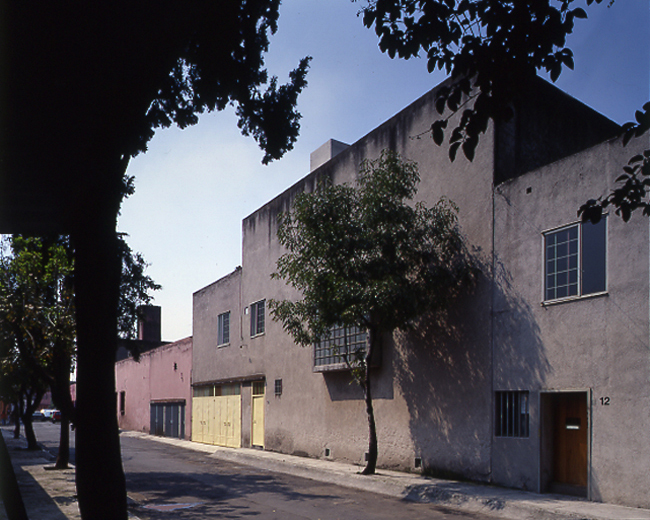GROUND FLOOR / Façade

Luis Barragán house and workshop rises on two adjacent lots, numbers 12 and 14 of General Francisco Ramírez Street in the Daniel Garza sector of Mexico City. The façades of this double plan form a single unit facing southeast.
The decision to build the house on a small street in the old Tacubaya working class neighborhood is by itself one of the first declarations of the work’s manifesto. Despite the pressures of urban development, this popular neighborhood struggles nowadays to conserve part of its singular character.
This neighborhood was composed of modest, small-scale houses, particularly vecindades, a traditional housing typology of Mexico City. Complementing the house-surrounding context are workshops, grocery stores, construction material distributors and small local restaurants.
Construction of the house (1947) began at the same time that Barragán was carrying out the first stage of Jardines del Pedregal, the most successful residential development for the elite in Mexico City’s real estate history. It is remarkable that the same architect who conceived it, did not choose to build his own house in El Pedregal, but rather on Tacubaya, maybe as a testimony of the urban values closest to his heart.
The main façade of the house is aligned with the street and preserves the appearance of the neighboring constructions. It is a massive boundary with precise openings. Due to its austere, almost unfinished expression, the house would almost be unnoticed, except for its scale, which contrasts the rest of the buildings in the neighborhood.
The house announces the dwelling of an artist, and at the same time, its materials speak of an introspective and intimate nature, paradoxically humble and intentionally anonymous.
The translucent, closed reticulated library window is the single item projecting over the plane of the façade. Almost the entire exterior conserves the color and natural roughness of the plastered concrete where only the pedestrian and automobile entrance doors and the window’s ironwork are painted.
In this sobriety, the upper left angle of the façade contrasts with two planes that form a corner: yellow and orange. Finally, the verticality of the white tower used as a water deposit crowns the silhouette of the house against the sky.
This same gesture, the water tower, can be found at Francisco Ramírez 20. The house at the left side also shares the façade’s silhouette and the projection of the central window in the composition. As it has been stated before, any chronology of the house and workshop of Luis Barragán must stop for an instant in the house next door, which can be considered, no doubt, as a first experimental model or the embryonic state of a project that continues in its neighboring lots. This closeness of two works intimately linked by the same creative process represent a singular case in modern architecture’s history.
The north door, marked with number 12, was Luis Barragán’s workshop during his lifetime. It can be distinguished by the façade’s silhouette, perceived as a volume of lesser height. Number 14 is the access to the architect’s house.

